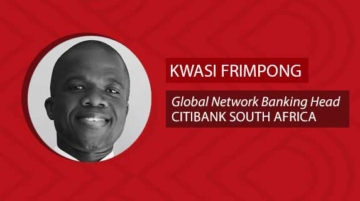
In Kenya, Chinese electric vehicle (EV) tech is not just about cars but it’s about the entire mobility space from scooters to buses to wheelchairs.
Just like in many other African countries, EV innovations come up as communities seek solutions to problems and challenges that legacy mobility companies do not offer or have often overlooked.
We all know about the electric buses and motorbikes but these solutions are not as impactful for someone who can’t use either of those and so the in-between is where the innovations are coming in.
Kenya is one of Africa’s fastest growing electric mobility markets and the powerful influence of Chinese technology on its evolution is evident across various modes of transport. From fully built electric vehicles imported into the country to locally assembled buses, three-wheelers, e-motorcycles and e-bikes, the EV landscape is changing fast.
But what this transformation means for local manufacturing, affordability and safety, is one of the challenges that has to be addressed urgently.
Show Notes:
- China Global South Project: Africa’s EV Adoption Accelerates With Chinese Partnerships by Njenga Hakeenah
- China Global South Project: Kenya’s Silent EV Revolution: Custom Chinese EVs Solving Transport Gaps by Njenga Hakeenah
- China Global South Project: Africa’s EV Trade Siege and What’s Blocking the Future by Njenga Hakeenah
About Dennis Wakaba:

Dennis Wakaba is an urban planner, GIS expert, and e-mobility specialist based in Kenya. With more than a decade of experience, he has shaped the development of mobility plans, master-plans, and e-mobility policy standards across East Africa. He serves as the Secretary of the Electric Mobility Association of Kenya (EMAK) and has held senior roles with companies such as Roam Electric (formerly Opibus), where he led business development and public affairs in the deployment of electric buses and charging infrastructure. He holds a Bachelor’s degree in Urban & Regional Planning and is a founding member of EMAK, contributing significantly to Kenya’s e-mobility policy and market growth.
Transcript:
NJENGA HAKEENAH: Hello and welcome to The Africa EV Show where we explore the forces driving Africa’s clean mobility revolution from policy and technology to people shaping the future of transport.
Today we turn our attention to Kenya, one of Africa’s fastest growing electric mobility markets and the powerful influence of Chinese technology on its evolution. From fully built electric vehicles arriving at the Mombasa port to locally assembled buses and bikes running out of Nairobi, Kenya’s EV industry is changing fast.
But what does this transformation mean for local manufacturing, affordability and safety? To unpack these questions, we are joined by Dennis Wakaba, an e-mobility solutions consultant with years of experience in the EV business here in Kenya.
We will discuss Kenya’s journey from imports to local assemblies and holding, whether “Buy Kenya, Build Kenya” can become more than a slogan and what it will take to build a sustainable EV ecosystem powered by smart policy and technology.
Hello Dennis and welcome to the show. It’s very good to see you.
DENNIS WAKABA: Thank you so much, Njenga. Happy to discuss EVs, Kenya and how we are going to work around it.
NJENGA HAKEENAH: We move to our conversation today and you are an e-mobility solutions consultant with years of experience in the EV business. And we do know that Chinese tech is the foundation for Kenya’s move towards electrified modes of transport. How has this sector evolved from FBU imports to building and locally assembling these EVs?
DENNIS WAKABA: Yeah, indeed for something to start, you know, experimentation has to start with fully built units before you start making. Ideally, some started off by picking up components and retrofitting, but for you to develop a scalable business, then you need to look at how to assemble because assembling is more favorable compared to doing FBUs. So for over the years, I think the first vehicle was shipped in here in 2011.
That was a Nissan Leaf by Nissan Kenya that was going to one corporate who wanted to go EV. Then I think the second batch was shipped in 2015, 2016. That included a Nissan Leaf and also an ENV200, basically for logistics.
And back in around 2021, I think around two more ones were shipped in the beginning of the year, just to create that buzz around how EVs are saving, especially in high utilization sectors such as logistics, you know, we got clients now leasing those EVs instead of buying. Then from there, I found companies like OPBus or Roomba used to work. We were doing conversion projects, motorcycle, we did a three-wheeler, we did a bus, we did cars, those are land cruisers for the two industries.
Yeah, it’s all these things within, let’s say, almost a 10-year period was a learning curve as China was industrializing and, you know, Europe, European automakers were shipping up to, you know, since the, what did something get, you know, the VW scandal that went through and emission became a real issue. And since then, when VW was fined, I think automakers were stricter in looking at emission lows in different countries. But besides that, there was a pressure on climate change and mitigation.
And so the same was being cascaded in Kenya, where people now were looking to shift towards cleaner energy, you know, whether biodiesel or LPG. That’s why we started to see a lot of LPG conversions. Then EVs came into the picture.
Yeah, so from then, you know, companies had already learned. I think in 2021, we had around seven to ten companies working on EVs, but mostly buses were two and having electric vehicle companies for cars only, I think one that was dealing with that. And for motorcycles, about five.
Then in 2023, it’s when things changed because now more entrants started coming to the market because the government had started to expose itself towards electric vehicles. And that’s when the conversation of getting more local value started coming in. With the regulation that was done, it’s called the legal notices back in 2019, had not envisioned anything to do with electric vehicles.
So that conversation was brought back in the Department of Trade, Industry and also the Treasury. And now more and more companies are coming here. So we need to push them towards assembly.
And that’s how through sector players like EMAC, Kenya’s visual manufacturers, they’ll push towards locally assembling because jobs are created through that pump.
NJENGA HAKEENAH: So it came to be that. Yeah, and this brings me, because I think we had mentioned or I had, you know, an interest in understanding that apart from assembling CKDs and SKDs, which are imported from China, and I don’t know how much from elsewhere, how do you see complete EV manufacturing taking off in Kenya? Or is partnering with EV manufacturers in China and elsewhere to build a locally feasible way to ensure that buy Kenya, build Kenya becomes a reality?
DENNIS WAKABA: Yeah, I know some people think that it’s easy to refloat from FBU and going into your manufacturing, but it takes a lot of learning first. Yeah, especially to do technology transfer. So as soon as you start doing local, local assembling, then you find now people getting acquitted with the technology.
Yeah, let’s say a company is partnering with the Chinese OEM to do local assembly. So is that capacity throughout maybe a three or four year period that there’s such thing where you can do component A locally, component B locally. For example, buses today seats, you know, the whole body, glasses can be done locally.
Flooring, you know, some of these things, some suspension components. But things to do with motor or the drivetrain, motor controller, inverters, you know, your rectifiers, those still have a long way to go because there’s something called scale. As soon as there is scale, manufacturing will start making sense.
And scale, with whom you’re looking at, if you’re producing 100,000 units of a particular motorcycle or motor vehicle, then you start making sense. Maybe for trucks and buses, probably around 1,000 to 5,000, it will make sense to localize because that’s the size of almost the East African market. So how we make it a reality is basically by continuing, you know, investing in R&D and making sure that some of the components that can be identified as low hanging fruit can be localized.
Even China today does not manufacture everything. Components that come from, you know, Thailand, Germany, US, some coming from Taiwan, some coming from Japan. Yeah.
So also for Kenya trying to get its own niche or not, it can really do in the drivetrain sector or the whole body sector. I think bodies are the easiest to retrofit or to localize or manufacture because it’s basically metal. We have a lot of iron or aluminum and titanium and all these kind of metals used in the chassis development.
NJENGA HAKEENAH: Okay. And I think when we are talking about assembling and these components, there are people who do not see that as a big thing because really it’s not full manufacturing, but it is like the foundation for us getting into, you know, full manufacturing. And like you’ve mentioned, even China gets some components from other countries like, you know, in Germany, in the US and things like that.
But our local issues here, what do you think is holding back local EV manufacturing? Because I think for a while we have had Isuzu, we’ve had Toyota who’ve been building some of these vehicles here, but I am not seeing as if it is the same with electric vehicles. So what do you think is holding back the EV manufacturing in Kenya?
DENNIS WAKABA: I think the biggest one, and I mentioned Italy, it’s scale. You know, as long as you’re able to achieve scale, then you achieve something called cost effectiveness. So your production like runs, you call it 24-7, yeah, three shifts.
So you can do two shifts. When you’re doing a half a shift, then your cost will be higher. Then your product to market will be way too expensive to be afforded.
You start doing local manufacturing now. So, you know, sometimes as an industry, this is where we can combine effort. If there’s a component we share across both, like all two wheelers have motors.
Yeah, sometimes two wheelers and three wheelers share the same motor. Yeah, if they can achieve a threshold of maybe 10,000 units, probably somebody can be able to set up a plant here. But even 10,000 is small.
You’re looking at maybe 100,000 units then to look at also the East African market, which should start working for that particular company. And that’s the only way I see that we can be able to unlock manufacturing businesses. The Isuzu, they are basically assemblers.
I cannot say they are yet manufacturing. Ideally, yes, they can become manufacturers by Kenyan standard where they’re integrating more than 40% of local content. But you find, yes, the threshold towards manufacturing, you know, building something from almost scratch, you know, tapping up here from upstream more than downstream properly.
NJENGA HAKEENAH: Mm-hmm. And I think it does make sense that, and this is something I usually mention whenever I am hosting someone and we are talking about manufacturing locally, is that I will not invest or I don’t think anyone who is business oriented will invest $5 billion to just be selling two cars a year, you know? So it really does mean that scale has to make sense for it to make economic sense.
Yeah, and I think also the cost of EVs remains high, meaning that very few of us Kenyans can afford them when they are new. And there are some financing plans already in place to help with ownership in Kenya, but they are largely private sector led. Is there a likelihood that Kenya will go the Ethiopian way by banning ICE vehicles to increase the uptake of EVs?
And this is bearing in mind the benefits like low fuel costs with such a shift.
DENNIS WAKABA: Just a little bit based on that question, and also tying it with bike and everything, I would say, one, you could ask yourself, who’s the biggest consumer of vehicles today? Yeah, you know, the commercial operators, their personal users, there’s government. Until there is a concerted effort to say that, well, Kenya will only buy in Kenya, right?
And you buy only Kenyan stuff, yeah? The Nyayo car was here, yeah? Then that scale will help the cost of EVs become lower.
So the government says that, well, we’ll only buy Kenyan locally assembled vehicles. Because today it’s not really, but it’s trying to buy maybe a high-ass here, et cetera. But how do we make EVs affordable?
And looking at the Ethiopian way, they banned ICE vehicles, but they banned ICE vehicles which are being imported, okay? If somebody is doing locally assembled ICE vehicles, brand new, they’re still in business, all right? If somebody is looking towards entering the fully built unit, they need a special permit, or it has to be, they have to seek an exemption.
I think it’s, cannot the same structure be replicated in Kenya? Yes and no. Yes, it can be done partially.
For example, through what we call installing or insisting on zero emission zones within a city of Nairobi, you can designate a zone, no ICE vehicle should enter there, call it a motorcycle, tuk-tuk, van, bus, any category. So I think that’s what you can do in Kenya. Because Kenya is a very diverse economy, then you have to do it a little bit gradually.
You know how Kenyans are.
NJENGA HAKEENAH: They’re always in opposition.
DENNIS WAKABA: Resolvers go to court. So doing it in a more focused manner, what it will mean. So first of all, we need to get the factories in here that can be able to do the supply side.
But whatever is workable today is reducing the number of years we’re importing eight year old vehicles. The next three years, we should be doing half of that. Yeah, maybe around four years or five years.
Then in the next eight years, we should have closed. No importation of old vehicles, because old vehicles are the main producers of emission because you’re using eight year old technologies or even older. You know, in new year, in the current year, regulation of emissions and our expectation that the year will be like this.
So that’s my thoughts on how we can do. But for us to also spearhead adoption, it has to be a way government has to allow a bit of ebis to come in for people to get. Today, the narrative out there across Kenya, from Kisumu, Kisii, Mombasa, Meru, Nanuki, everywhere we’ve traveled and our road trip editions, people are saying, why are they too expensive?
Why are they too expensive? These EVs are not expensive in the source markets, but when they get here, the price doubles because of the taxation regimes. Yes, you get a car for $10,000 in China, for example, or in Japan, when it reaches here, it’s $20,000 or $22,000.
So somebody feels, why should I buy a car double the price? I’d rather put that fuel for 10 years.
NJENGA HAKEENAH: Yeah, it does me. Actually, for me, I’m like, why should I give government free money? And they’re taxing me everywhere.
But I think in that still a conversation on new vehicles and their prices and the fact that they’re not affordable, I have also seen and had a few comments and questions regarding the shelf life of EVs. And some people are wondering whether the vehicles will have to be toast, like we do with phones, once they start misbehaving, maybe with issues like battery not charging or software problems. And the question that has been is, does it mean that once this vehicle’s battery warranty is over, my car dies?
And when it dies, does it mean that I have to toast it and get a new vehicle? So is this the case for electric vehicles? Because you’ve experienced this from 2011 up to now, you must have experienced something with these EVs.
DENNIS WAKABA: In fact, the opposite is true. Now we are incarnating them, you know, bringing them back to life. Those who are dead have been brought to life.
So for EVs is basically a piece of electronic. There is the issue of how do we handle EVs, et cetera, is a key concern on circularity within the EV itself in an electric vehicle because it has a lot of components. The battery is very valuable because of the rear uses.
So nowadays, the technologies are trying to minimize the rear materials. So ideally, today, the most sensitive part is the battery, because that’s what is part of that EV. Most of the other components, we, you know, leave almost the vehicle itself 20, 30 years easy.
But for the battery is where the technology has to keep all the orbit, make sure that it also matches up to the ICE car. Because we have ICE cars that are as old as 50 years. For today, the products that are coming out from 2023, those ones for sure can even last 20, 25 years easily, especially for personal use.
Commercial, they estimated to do between 8 to 15 years, depending on the utilization. However, even if that battery has to be replaced, we have three ways of handling that battery. One is refurbishing it to solar.
The other, it’s maybe repairing it, you know, recalibrating it. Now, the other one is basically recycling. Batteries, you can achieve up to 95% recovery on materials that could be your lithium gel or through the black mass, recover that cobalt, recover, you know, your nickel, et cetera.
So maybe what is not usable is a plastic covering that might be, you know, taken to get up there or even take it to a waste-to-energy plant. So to achieve full circularity. So on the batteries is where the technology has to continue maturing more and more.
We have things now like solid-state batteries, which can outlast the vehicle, you know, up to, you know, 30 years easy and 20 years in commercial application. So in terms of those things, I think it’s because a Ford is quite cheap. You get a phone for the $1,000, why would you repair a phone for $1,000 with another $1,000 instead of getting another $1,000 for each phone?
Or, you know, just even the most expensive phones, you find that they are, you have battery replacement, you have the conditioning, refurbishment. The same case with EVs, because EVs are pricey. You find now people now are reconditioning.
And in future, you are aware that’s the business we are in. Yeah. We get an old EV that had stored, we repair it, we recondition it, we make a new battery, then start moving.
Yes, as good as new. So it’s very difficult to get an EV today that has been toast, but there’s something, the information gap. So in case there’s somebody out there with an EV that is toast, please reach out.
NJENGA HAKEENAH: It will be brought back. They are resurrected, these ones.
DENNIS WAKABA: Yes, yes.
NJENGA HAKEENAH: Yeah, it’s interesting. Yes, that was a question that I’ve had a number of times. And I was like, maybe, maybe there is something.
And so I hope they’ve gotten the answer. But too much technology means too much data being collected. For us, where does this data end up?
And with Chinese EVs, does it end up in China with the EV makers? How is it regulated? And what does this mean for me as an ordinary EV user who is concerned about their data?
DENNIS WAKABA: Yeah, so normally EVs nowadays, because of their smart features, they need to be connected. They need to learn, you know, driver behavior, their surroundings in order to improve. So at times, a manufacturer might need access to data just to make sure that those improvements are done in the next model, or send over the updates to your vehicle.
However, this is optional. If you don’t want anybody to monitor you, you can disconnect. Don’t install a 4G SIM card in your vehicle, then you’ll be disconnected.
It’s as simple as that. Just don’t give any connection to your vehicle, then your manufacturer will not. But if you are a tech enthusiast, even today, your phone is communicating to your manufacturer, your computer.
And those updates, like today morning, this computer says to reboot, to get an update, because there’s a risk. Or there’s an improved particular feature. So it’s up to the user to see whether, well, do I accept getting updates, that it improves my experience?
I want just to remain closed. So it’s an option. And in terms of data, I believe every country has its own regulations.
So whoever is selling, whoever is making, whoever is, you know, handling this data has to comply to the regulations of the world and the country’s AIE.
NJENGA HAKEENAH: All right, all right. I think that kind of helps with understanding some aspects of that. But another issue is when this technology does not respond to emergencies.
And a few, I think it was last week, on Monday, there was a Xiaomi SU7 that crashed in China, leaving one dead. And actually, it was in southwestern Chinese city of Chengdu. And if this can happen in China, what about a similar thing happening in Kenya?
Do you think there are, or are there regulations and procedures to address such safety issues? Because I feel if that would happen in China, where this vehicle is made, and that is where the tech is basically, what happens to somebody a thousand miles or more than that away from where that tech is? And if this happens, what do we do?
What is our recourse?
DENNIS WAKABA: Yeah, every product comes with a product manual. Well, I don’t know, I did not read. Yeah, well, the case for the Xiaomi crash was quite unfortunate, because I also saw that video where, you know, a fellow driver was coming to try, you know, crash the window, open the door, the door is a flash handle to not unlock, and we ended up losing a life.
There is something that manufacturers should take seriously. You know, sometimes we invest too much in comfort rather than safety. Like the Xiaomi Z7, there’s double glazing, or it’s a double window, just to reduce the noise.
Yeah, which also makes it hard to break, for example. There should have been something like, you know, quick releases. Yeah, when the electronic format of opening the door is not working, then you still have a manual override.
So some of these features have to be degraded just to avoid, you know, such. Again, an SUV, that’s a very powerful car. So also how we drive our vehicles is, it should be in a way that prevents, you know, it should be also a preventive measure by driving properly on these roads.
I know it’s not one incident, because they also suffered, in the YU7, an SUV, a version of the SU7. So it’s a matter of also educating, for example, the emergency response team on how to handle an EV fire, for example, which is also a gap with most African countries, probably even globally. Not any manufacturer will donate a car, then we set it on fire, we see how, you know, the crew will perform or will handle such an incident.
Yeah, then, of course, the body cutters, you know, something to cut the A pillar, so that you tear up the vehicle. The good thing with an EV, before the fire catches, it takes some time, but the flames are quite hot. So I believe it’s something that is a gap that should be addressed, you know, investing in some things like, you know, lithium extinguishers, fire blankets.
You know, like the way we have our jet fighters, the cockpit.
NJENGA HAKEENAH: You’re ejected and then landing somewhere, you know. But anyway, I think safety first.
DENNIS WAKABA: Yeah, we need to work around technologies that safeguard life, because that life is very important. For somebody to buy an SUV is not a cheap guy, yeah. So I wasn’t probably supporting other people, yeah.
Which was quite a miscalculate.
NJENGA HAKEENAH: And really, you know, it’s not just that it’s Chinese EVs that have issues. There was an issue with Tesla a few years, I think it was like a year or two ago, in China still, and the outcome was fatal. So I think this technology has to be addressed.
And I know that when it comes to those flash handles, there have been like policy inquiries and proposal for changes. So probably as we move ahead, we will see a different kind of, you know, vehicle coming out with those kinds of handles and the digital handles and things like that. But in Kenya, charging infrastructure is still a major concern for many drivers.
But there have been very many roadshows. You’ve had several roadshows whereby you’re going around Mount Kenya, you guys. You’re going to Nakuru, to Kisumu, like you mentioned.
And this is to showcase that EVs can move from one town to another without dying midway. There’s also one that just happened on the road to Addis because of what is happening in Addis now. But how many do we have now in Kenya?
How many chargers or along the way do we have in Kenya? And what types are they? Are we building any of these locally or are they all?
DENNIS WAKABA: Yeah, when it comes to charging infrastructure, you know, before somebody buys an EV, I tell you, I need an EV that can take me to my rural home. That’s usually the SI unit. The second SI unit, if they see the car, then they ask the car, Yi gari ita fika Mombasa, this vehicle reach Mombasa.
Because Mombasa is almost the farthest distance from Nairobi, you know, 500, 400, 500 kilometers. So in terms of charging infrastructure, for us during the days that we conduct EVs, only one is to raise awareness, but to see how range anxiety actually feel. We talk about it in conferences, but what we usually experiment, what is it to have an EV without charging infrastructure?
Today, charging infrastructure is mostly concentrated within Nairobi. With the extension of it, Nairobi metropolitan area. For example, we have chargers in Machakos town, we have chargers in Nakuru, DC.
Now we are deploying chargers in Narok, you know, Kisii, which are DC as well. Just to continue. And all these were inspired by our road trips.
Because we’ve been going to Nanyuki, Nehuru, now we have a DC charger. And this helps now drive us to start moving. And today people now are driving all the way to Kisumu, just because of there’s a charger in Nakuru, a midway.
Charging, we stop there for 30 minutes. They are fully topped up on the road. And then when they do that return, they can do the same.
It’s the same thing that we want to do along the Narok route. And of course, the legacy route of Mombasa is still in the works. We want to do a charging point midway, at Tedamptito or Emali, whichever works.
Our boy is also being mapped to have a charging there. And there are a couple of other initiatives. Of course, we will come in, bringing electric trucks between Mombasa to Madaba.
Of course, those will require high capacity chargers. Not these small ones that you’re putting of 60 kilowatt and the 80 kilowatt. Try to require something to do with 180, 350, 240 kilowatt chargers.
Which definitely for the smaller commercial vehicles, this is a very big win. But of course, in Kenya today, turning infrastructure-wise, we’re still grappling with an issue of connector standards where CCSD is the most popular. But there are a bit of GBT or Chinese Standard and Chademo because of our secondary market, especially from Japan, which uses Chademo type one.
So we are racing against this kind of mix using adapters just to make sure that we cover everyone. So it’s still growing probably at around 200 points, AC and DC combined through the country, which is not a bad thing. And we are deploying almost quickly with the charger being installed for the AC or DC, which is fine, but it should be accelerated.
However, the way to accelerate is basically putting more EVs off the road because whoever is putting up a discharging station that costs maybe 1.5 all the way to 4 million and above has to have a return on that investment. So it’s critical that the ecosystem grows hand in hand. Don’t believe in the chicken and egg.
I believe the chicken and the egg should come together.
NJENGA HAKEENAH: And I think from what you’re saying, on Kenya’s trunk roads from Mombasa to Malabar, Kisumu and all that, if you have four chargers along the way from Nairobi to Mombasa or four, five from Nairobi to Kisumu, then those are enough. They will get you where you are because I think the lowest that we have in terms of like capacity or range that I have spoken about is the Henry, which was about 170 kilometers. So if it needs to go to Kisumu.
On sport mode? Yes, on sport mode. Above, I mean, if it is the regular, it’s about 200 and something, right?
So I think if you had like two charging stations for that car, it’ll move from Nairobi to Kisumu easily because by the time you’re getting to exhaust the 200, you have already gotten to a charging station. But thank you so much, Dennis.
That is Dennis Wakaba, an e-mobility consultant helping shape Kenya’s electric vehicle landscape.
And from the influence of Chinese technology and the hurdles of local manufacturing to data privacy and the safety of next generation vehicles. One thing is clear that Kenya’s e-mobility transition is no longer just about imports, but about building capacity, confidence, and trust in clean transport. Now, if you enjoyed this conversation, don’t forget to follow the Africa EV show, wherever you listen to your podcasts.
And you can also find more stories and insights at ChinaglobalSouth.com. That is our website. You can also go to our social media platforms.
We are across all of them, Facebook, Twitter, or X, and then Blue Sky as well. And on ChinaglobalSouth.com, we track the changing face of mobility across Africa and beyond. My name is Njenga Hakeenah.
And as always, I am so grateful that you have found the time to listen to this and to watch. And until next time, keep moving forward because you know what? We are e-mobilizing.
Have a nice one.











